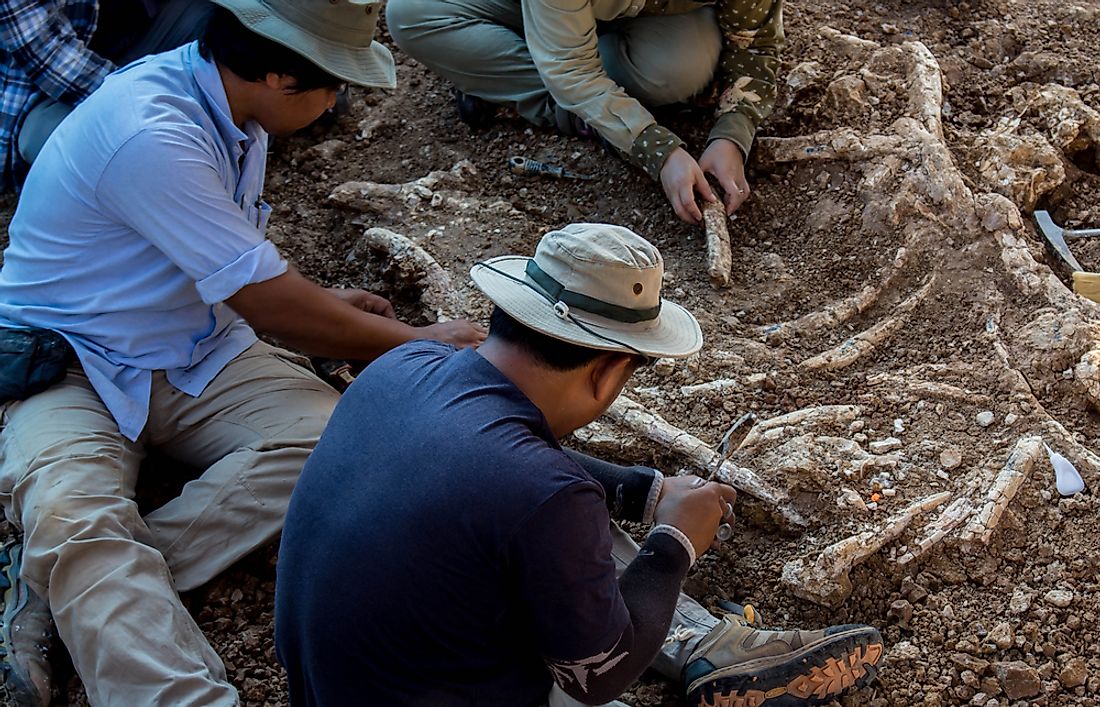What is the Difference Between Paleontology And Archeology?

Paleontology and archaeology are two closely related scientific fields of study. Despite having several similarities, they have different and distinct goals. A Paleontologist studies fossils while an archaeologist studies human artifacts and its remains.
The fossils studied by paleontologists and archeologists include bones, shells, body imprints, wood, and many others. The paleontologist studies these items to try to understand the forms of life that existed on Earth thousands or millions of years ago. An archaeologist studies the same items to try to understand human life and history.
Paleontology
Paleontology is the scientific study of past life or the existence of life before the Holocene Era which is approximately 11,700 years before present. Paleontology is the study of fossils in an effort to try and understand the evolution and interactions between organisms and their environment. In the 18th century, Paleontology was established as a science following the works of Georges Cuiver who worked on comparative anatomy. However, it was in the 19th century when the field developed quickly.
Paleontology as a field of study can be placed somewhere between geology and biology, and can be differentiated from archeology because it excludes the study of the anatomy of modern humans. The techniques employed in paleontology borrow heavily from engineering, mathematics, and biochemistry. Paleontologists have been able to discover the evolutionary path of life going back to approximately 3.8 billion years.
Branches Of Paleontology
- Vertebrate paleontology
- Invertebrate paleontology
- Paleobotany
- Palynology
- Micropaleontology
- Paleoecology
- Paleoclimatology
- Biostratigraphy
- Biogeography
Archaeology
Archaeology is the scientific study of human artifacts through analysis and recovery of these material cultures. The records of an archaeologist would include architecture, artifacts, ecofacts, or biofacts, among others. Archaeology as a field of study can be categorized as social science and a branch of the humanities. In regions like North America, it is categorized as a field of study within Anthropology, whereas in Europe it is often treated as a field of study on its own or a sub-field in other fields of study.
Archeology is different from paleontology because it focuses on past human life as opposed to the past general life forms. Archeologist studies human history and prehistory starting way back in the era of stone tools in about 3.3 million years until the recent past decades. Prehistory covers more than 99% of human past starting from the Paleolithic period until the era of the advent of literacy. Archeology like paleontology relies on other disciplines in research to understand past human life. It borrows heavily from geography, classics, history, geology, anthropology, art history, ethnology, linguistics, semiology, physics, sociology, chemistry, information science, paleobotany, paleozoology, paleontology, paleogeography, paleoecology, and statistics among others. Archeology began emerging in the 19th century and has become a popular field of study around the world.
Branches of Archaeology
- Historical archaeology
- Ethnoarchaeology
- Experimental archeology
- Archaeometry
- Medieval archaeology
- Near-Eastern archaeology
- Maritime archaeology
- Landscape archaeology
- Battlefield archaeology
- Sinology
- Indology
- Egyptology











